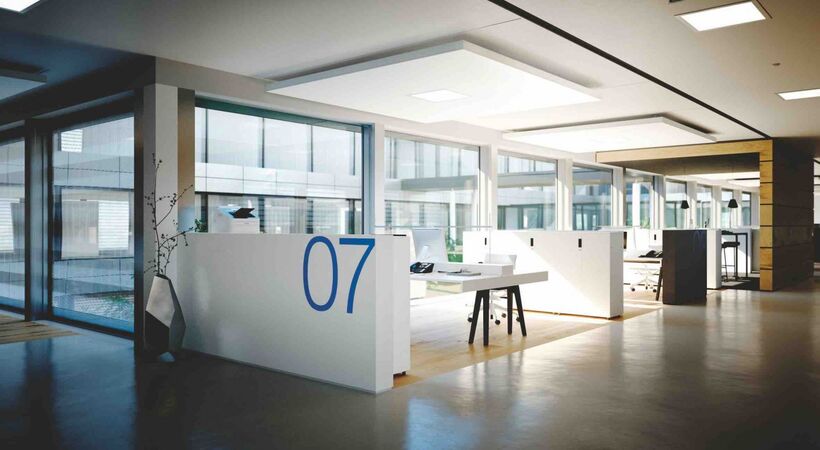IoT, digitalization and greater connectivity have developed closer links between humans and the buildings we inhabit - giving us stronger control over all elements, from switching off lights in empty offices via a tablet, to setting our heating and making sure that our spaces are secure. But to be truly 'intelligent' the buildings we create must respond to the long-term needs of the people that live and work there and be able to grow with them. Oliver Iltisberger, managing director of ABB’s Smart Buildings business line reviews the rise of smart building control and offers predictions on how the technology will shape the way we live, work and play.
Urbanization will see over 70 per cent of the world living in cities by 2050*, so it’s crucial that we take a more holistic approach to smarter buildings (supported by software-enabled digital services) and look at the complete ‘ecosystem’ of the building to make sure they are smart enough to meet users’ expectations for the immediate and long term.
Research by business analysts Frost & Sullivan suggests the connected market will have almost tripled in size from $250 billion in 2012 to $370 billion by 2020, with smart homes accounting for around a third of this figure. Increased digitalization, which will see the number of interconnected devices reach 33 billion by 2020**, will also create positive opportunities for growth in smarter building.
As the cost of communication decreases, more applications will become possible and affordable and this technology boom is now enabling buildings to think for themselves. Through making informed decisions about control measures from comfort to security, buildings can now become more in tune with the behaviour of inhabitants.
Indeed, whether we are building an office block, hospital, hotel or home, common systems and platforms enable buildings to become more intuitive to the patterns of users and adapt key elements to suit their needs.
IoT has already delivered huge strides in the technology behind building control, with more and improved IP devices and sensors – e.g. those that measure temperature, brightness and CO2 metrics - having led to technology that improves the management of energy usage.
Innovations like KNX, HVAC control, lighting and emergency lighting, energy metering, plus security and fire safety are readily available to improve the user experience and drive building efficiency.
From automatic switch-off of lights when the last person leaves a meeting, to turning the heating on before the first shift starts, all are made possible through smart technology.
Optimizing connectivity helps deliver unprecedented levels of control and comfort for the end user, so collaboration is key – and an open Application Programming Interface (API) allows other technology developers and service providers to dynamically integrate data from our systems into their own software.
Crucially, for the end user, this is possible without compromising the security of the data. The API can also be used to regulate the transfer and further processing of data and content between different web pages, programs and systems. Over the next few years, we also predict that these smart solutions will play a key role in helping individuals, communities, organisations and governments deliver on their sustainability objectives. Not only improving the quality of life for a building’s occupants but also reducing the impact on the environment.
Across many of our installations we have seen smart buildings, which include automated and connected building functionality with remote monitoring, reduce energy consumption and associated maintenance costs by up to 50 percent.
Another area where smart automation can be deemed critical is in monitoring the security of a building. We are seeing greater convergence of building automation, IoT and emergency lighting systems for connected buildings, to enhance safety and access for users.
Coupled with security, is the drive for greater building personalization. Artificial Intelligence (AI), face recognition technology and integrated digital solutions within the smart building sector is also an exciting trend as we look to solutions which help us improve, control and protect our local and global environment.
Imagine a building where you get a personal greeting when you enter, the lift takes you direct to your office floor and the lights switch on and the temperature increases to your personal preferences.
With simplicity, improved comfort, safety and maintenance driving demand for new smart technologies and monitoring platforms, buildings develop and respond to the needs of its occupants. Yet it’s important to remember that it’s the facility manager or homeowner who ultimately controls how much automation they want inside their building.
What’s not in question, however, is that smarter building automation makes the impossible, possible. It helps the building remain current and relevant for generations.
Source: * UN Study ; ** Strategy Analytics Study



